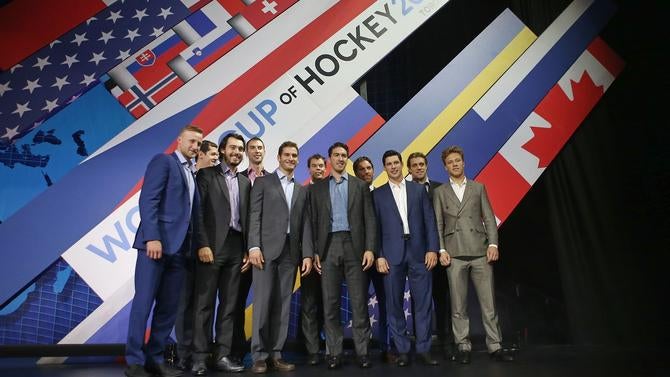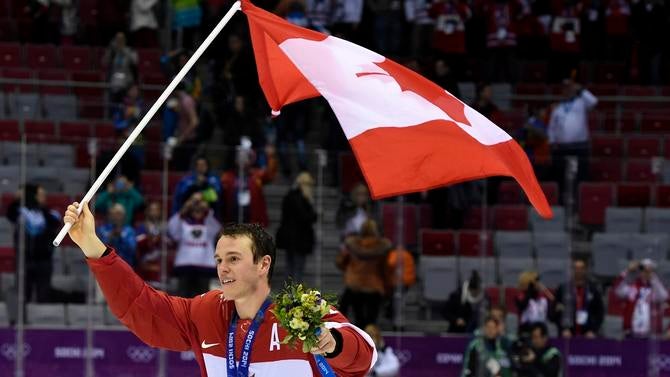2016 World Cup of Hockey: Four big questions as tournament nears – CBSSports.com
Believe it or not, competitive hockey is almost back. Training camps for all eight of the World Cup of Hockey participants open Sept. 5. Soon after that, the pre-tournament exhibitions — all of which will be available via television or live stream — will be played in rinks around the world.
With that in mind, we’re kicking off our tournament preview coverage with four big questions facing the 2016 World Cup of Hockey, which will officially begin Sept. 17 in Toronto.
1. What is it going to take for this event to be considered a success?
The World Cup of Hockey is, in a lot of ways, an experiment. Even though the NHL has held a World Cup twice previously and before that, the Canada Cup tournaments, they enter the 2016 World Cup of Hockey in a very different environment.
The 2004 World Cup of Hockey came at a time where the league’s popularity was severely waning. Recall all of the changes the league made after the lockout. The game has rebounded dramatically and may be as popular as it has ever been. Will that be enough to carry the tournament, though?

The league doesn’t want to shut down in the middle of the season for the Olympics anymore and the NHL is doing all it can to stack the deck to make this World Cup work. They created two teams that aren’t even real countries to ensure more stars of the game are included, kept it simple and cheaper with one site for games, put the U.S. and Canada in the same group to guarantee one big rivalry game and even bypassed regular U.S. TV rights holder NBC Sports for ESPN’s family of networks to carry the tournament south of the border.
If it fails amid all that, then maybe it should be mothballed again.
But what will indicate success or failure? First and foremost, obviously, will be money.
The league expects every game to sell out in Toronto (that hasn’t happened yet) and they’ve reportedly acquired over $25 million in sponsorship money for this tournament, which will include advertisements on all jerseys.
As of right now, after you throw in TV rights deals and projected ticket sales, it looks like the tournament is going to turn a profit, which might be enough to make it a more regular event. The league has had a lot of success with supplemental events like the Winter Classic and Stadium Series games, and there’s little reason to expect this tournament to be much different in terms of opening another revenue stream for the NHL.
But the league will also be monitoring fan engagement and interest and that is a lot tougher to predict. While the nationalistic element of the tournament and the number of star players attending is attractive, it’s hard to see this tournament generating any more of an American TV audience than the league does for higher-profile regular-season games. If it does better than that, however, that should be viewed as a win.
No one, not even the league, expects this tournament to generate the level of attention as the Olympics, which this tournament could ultimately replace in terms of pros playing international hockey. But if it makes money, if fans are paying attention and the audience grows, the league has a leg to stand on in negotiations with the International Olympic Committee, and it has a backup plan if going to the Olympics becomes untenable. But there’s another very important element to consider regarding the Olympics …
2. Will the event matter enough to the players to supplant the Olympics?
While fan interest is incredibly important to the future of the NHL’s participation in the Olympics, the players’ opinion is going to matter a lot, too. One of the biggest hurdles for the league to cease participation in the Olympics is that the vast majority of players eligible still want to go.
For example, Anze Kopitar cares enough about the Olympics to extend his season by playing in Slovenia’s Olympic qualifiers next week before linking up with Team Europe for the World Cup. And it’s not just the European players that want to represent their country on the biggest stage of international hockey. The Americans and Canadians, by and large, want to play in those tournaments no matter where they are held.
So will this tournament scratch the itch of veteran players enough to get them to relent on their Olympic desires? It’s hard to see that happening, especially when a number of proud hockey nations are not included. That said, this gives the league a chance to show players there are alternatives to disrupting the season.

3. Will anyone be able to knock off Canada at home?
Now we get to the actual hockey portion of the conversation. Canada is the obvious favorite, even after losing Jamie Benn and Duncan Keith to injury. It’s the deepest team up front, with a healthy Carey Price in net and if the defense isn’t the best in the tournament, it’s a close second.
There’s not going to be as much pressure on this team as there was at the Vancouver Olympics in 2010, but there’s still pressure. Canada has a core of players that has won multiple Olympic gold medals and 10 prior Stanley Cup champions. It’s a veteran group with strength down the middle with an abundance of elite centers (Sidney Crosby, Jonathan Toews, John Tavares, Patrice Bergeron, Joe Thornton, etc.). It’s going to take a lot to beat this club.
This tournament needs to be compelling to attract an audience. If Canada rolls through the tournament, it might be compelling to the Canadian TV audience, but not much anywhere else. Goliath without a David just doesn’t work, but the field is going to be hard pressed to take the title away from the Canadians in Toronto.
Sweden looks to have the best chance of anyone. The defense is probably the deepest in the tournament and Henrik Lundqvist can steal games. Russia is loaded up front, but very thin on the back end. Finland is always scrappy, but it could have a hard time scoring and the goaltenders were suspect last NHL season. Team North America looks poised to scare some teams, but it would be hard to see the youngsters challenging Canada’s veteran-laden club. It’s hard to see either the Czech Republic or Team Europe mounting much of an offensive either. So that brings us to …
4. Will Team USA’s strategy built on grit work?
There’s little doubt that the U.S. roster was built for the specific purpose of beating Canada. The tournament goes through the hosts and it appears the U.S. also figured it could not out-skill Canada. So general manager Dean Lombardi built a team with a lot of sandpaper instead.
That’s why you see guys like Brandon Dubinsky, who likely made the team specifically to annoy Sidney Crosby. The U.S. went heavy on grittier players like Justin Abdelkader, Ryan Kesler, David Backes, Dubinsky and initially Ryan Callahan, who has since been replaced by Kyle Palmieri due to injury. The team also focused on some grittier defensemen with Dustin Byfuglien as the only truly dynamic offensive guy (who also happens to hit people like a freight train). There are other blueliners with offensive abilities, but great puck movers like Keith Yandle and Kevin Shattenkirk were passed over.
The theme seems to be that it wants to be “tougher to play against” by being tough. It’s somewhat the opposite of what has been working at the NHL level. Almost all of the recent champs have excelled in the puck possession game over the. This U.S. squad is going to be hard pressed to out-possess opponents.
It’s a risky strategy with how skilled some of these other teams are and it likely puts a lot of pressure on Team USA’s goalies, who are quite good (Jonathan Quick, Cory Schneider and Ben Bishop). With how this team was built, a lot as to go right for it to be successful in a tournament where it’s probably chasing the puck a lot. As is always the case in short tournaments like this, though, it only has to work for two weeks.



